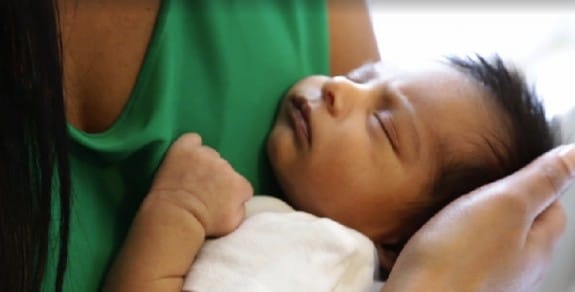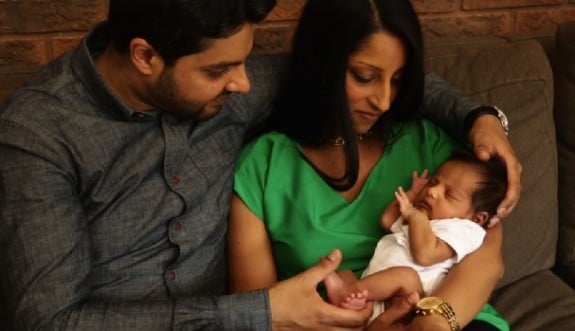Many scientists, doctors and researchers have been looking for new ways to help improve the success rates of in vitro fertilization (IVF). Doctors in Canada have done it successfully. Zain Rajani, now 22 days old, is the first baby to be born with their new technique, and eight more women are expected to deliver soon.
Zain’s mother, Natasha Rjani, went through a special technique in which a small sliver of her ovarian tissue was removed in a quick laproscopic procedure at First Steps Fertility in Canada, where she lives. Egg cells were then identified, removed, and purified to extract their mitochondria—the powerhouses that energize everything a cell does. Once the old mitochondria had been removed from her eggs, new mitochondria from egg precursor cells (a type of stem cell) were added to her poor-quality eggs and her husband’s sperm. Natasha’s own eggs were rejuvenated and her and her husband’s IVF results dramatically improved.
In the couple’s first traditional IVF attempt, 15 eggs were produced. Only four could be fertilized, and only one had been viable enough to transfer. Unfortunately, it did not take.
“I knew it wasn’t the best quality embryo, but it was what she had,” Dr. Marjorie Dixon, of First Steps Fertility, told Time.
But with the stem cell procedure (called Augment), the couple was able to produce four viable embryos. Two were frozen in case the couple decides they want more children. One of them became baby Zain.
The Augment procedure emerged after a breakthrough made in 2004 by biologist Jonathon Tilly, then at the Harvard Medical School and now chair of biology at Northeastern University. He had found that cells scraped from the outer surface of the ovary contained precursor cells that might be able to provide a more reliable source of energy to older eggs.
“The technique addresses a void now in IVF,” Tilly told Time. “No cell culture can circumvent poor egg quality or an egg that is simply too tired to execute what it is capable of doing. We are taking patients with a zero percent pregnancy rate, patients who have failed IVF because of poor egg quality, and getting them pregnant.”
Indeed, the procedure has only been used on women that have failed at least IVF technique. Some have failed up to seven. For Natasha and her husband, the journey to pregnancy lasted four years and included a slew of methods, including fertility drugs, intrauterine insemination, and even naturopathy before trying IVF. When that resulted in a miscarriage just a few weeks after implantation, Natasha held onto hop.
“I tried to remain positive, thinking there is a light at the end of the tunnel, and that a baby will be there at the end,” Natasha told Time.
That optimism paid off, and her very own body held the solution.
You see, the stem cells used to conduct the Augment procedure actually come from the mother, as do the eggs themselves. That makes this procedure unlike the three-parent-embryo procedure recently approved in the United Kingdom.
Unfortunately, this doesn’t make Augment anymore available in the United States; it’s still considered “gene therapy” by the FDA, and they control all types of gene therapy. They say more testing must be done before it can be used in the United States. OvaScience plans to conduct 1,000 more cycles using the Augment procedure this year. Their hope is that this will generate enough data to bring the procedure to the U.S. And Tilly stands behind OvaScience and says that, despite any doubters concerned about what the precursor cells are capable of, these cells can only do what the company says they can—rejuvenate old, tired eggs. Natasha and her husband are believers in the procedure as well, and they hope that their story brings hope to others.
“We see Zain as a symbol of hope for all couples struggling with infertility,” Natasha said. “While the process is long, emotional, and physically draining, there is light at the end of the tunnel—and that light for us is Zain.”
Related Articles:









